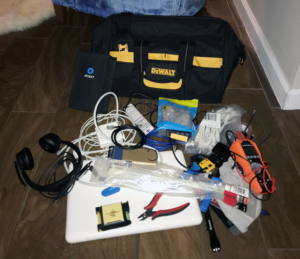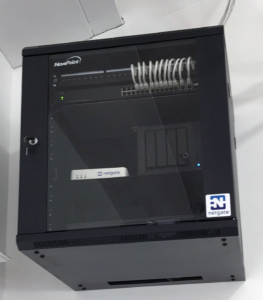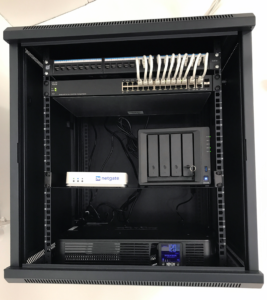Been working on some new artwork. Still needs some polishing up but I think it’s better than the previous version and will do for now. What do you think?
Category Archives: Nerd Stuff
Awesome IT Technician Tool Bag
I mean..for me, it was time. Stuffing all these tools into a small backpack was inefficient and unprofessional. So I went with this really cool, affordable and I must say, high quality tool bag from DeWALT ->
At just 45$, it’s a steal! Really happy with this bag so far.
Check the before and after pics which also provide a quick ‘whats in my tool bag?’. Enjoy ->
New Network Install For A Client
Another day, another happy ‘small business’ client, hehe!
Had a client move into a small warehouse and needed a brand new network setup. We handled this project at full scale, from sourcing all the parts to physical install and network/server configuration. Nothing too crazy or complicated yet this network setup needed to be reliable and scalable.
After carefully assessing client specific needs and budget,
we ended up going with ->
* NavePoint 12U Wall Mount Network Server 600mm Depth Cabinet Rack Enclosure Glass Door Lock
* Cables Direct Online 1000ft CAT6 Solid Cable 550Mhz Ethernet LAN UTP 23AWG RJ45 Network Wire Bulk (White) (had to do about 10 cable runs)
* Synology 4 bay NAS DiskStation DS920+ (Diskless), 4-bay; 4GB DDR4
* ETS 24 Port CAT6 Pass Through Coupler Patch Panel with Back Bar, Compatible with Cat5, Cat5e, Cat6, Cat6A, Loaded with Unshielded keystones
(these are GREAT! Highly recommend! Who wants to sit around all day punching down wires to the back of a patch panel when you can instead just simply plug Ethernet heads in?)
* Ubiquiti UAP-AC-LR-US Unifi AP-AC Long Range – Wireless Access Point (2-Pack) Bundle
* Cisco SF300-24P 24-port 10/100 PoE Managed Switch with Gigabit Uplinks (SRW224G4P-K9-NA)
* https://shop.netgate.com/products/3100-base-pfsense?variant=32156744286323
It was a little tricky setting up the UniFi Access Points and Synology NAS without an internet connection (customer did not have internet yet). The cables runs weren’t too bad since the ceiling is wide open on the warehouse floor though it was a physically taxing job, especially terminating all those ends. Did get help running the cables though, thank you Jeremiah! Other than that, everything went quite smoothly overall.
There is still quite a bit of network and server tuning left to do but the project as a whole has been completed! Physical install we knocked out in about two days and server/network configuration took about another day and a half. Great experience and thank you to my client for allowing us this opportunity to support their network and server infrastructure





